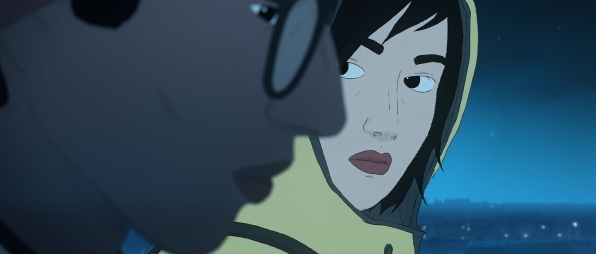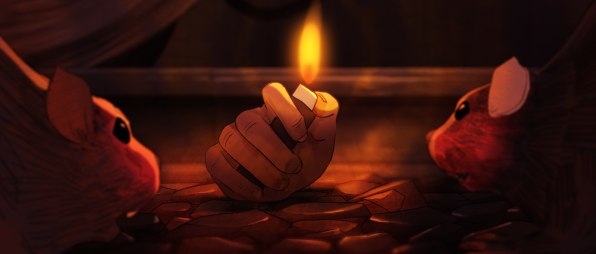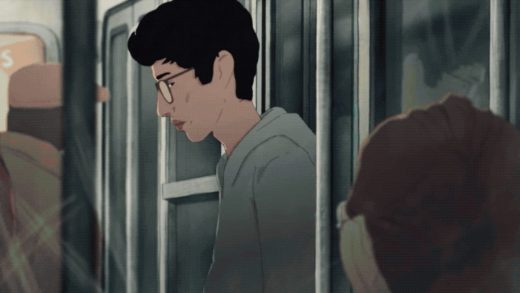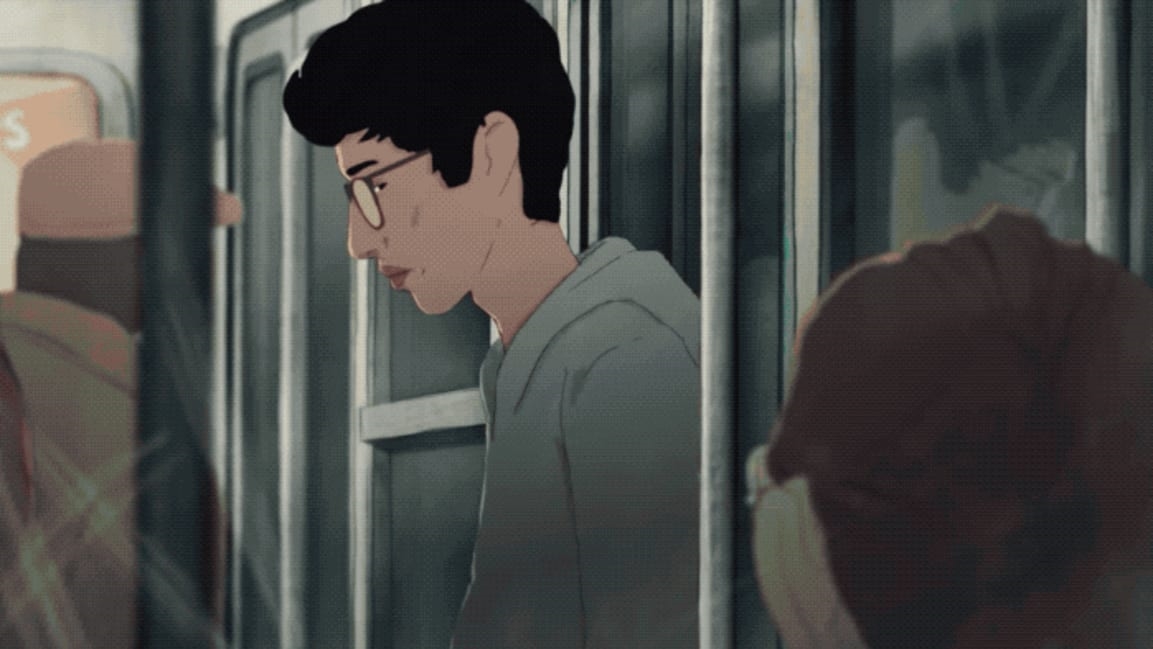The animated Netflix film ‘I Lost My Body’ is a deeply moving hero’s journey . . . for a severed hand
Filmmaker Jérémy Clapin had a very important question to answer for his debut feature film: How does a severed hand walk?
Based on the novel Happy Hand by Amélie screenwriter Guillaume Laurant, I Lost My Body (J’ai perdu mon corps) tells the story of a severed hand on a journey to reconnect with its owner Naoufel, an aimless pizza deliveryman who’s trying to navigate life after a family tragedy. The film is layered with flashbacks to Naoufel’s youth, the main timeline of the severed hand making its way home, and a slightly parallel arc that shows the lead-up to how Naoufel lost his hand in the first place. A French production, the movie is available in its original French or in an English version, with Dev Patel voicing Naoufel and Alia Shawkat as Gabrielle, a woman he falls in love with after interacting with her through an intercom on a failed pizza delivery run.
Admittedly, the plot sounds like utterly ridiculous, and it’s easy to imagine how I Lost My Body could have gone that route. But what Clapin created is a remarkably touching and artful rumination on loss. The film has certainly resonated: In May, it became the first animated feature to win the Grand Prize at Critics’ Week in Cannes.
“I read the novel, and what really caught my attention was the reverse of things about the feeling of loss: It’s not the body missing the hand but the hand missing the body,” Clapin says. “It was a bit weird but very challenging also. That’s why I went into the project.”
One of Clapin’s challenges was finding the cinematic language to make such an unconventional story work. In the book, the hand is narrating its story, but Clapin opted for flashbacks where he was able to establish parallel sensory experiences for body and hand: Naoufel becomes obsessed with sound after he receives a recording device and starts capturing noises around the house. The hand, meanwhile, is dependent on tactility to make its way through the world. Both are deviations from the novel. “I needed Naoufel and the hand to be connected in a non-sensorial way,” Clapin says.

He also needed to figure out how to characterize an unorthodox hero like a severed hand.
It’s not a character you’re able to connect with in a normal way, e.g. by the words it says or even facial expressions. But the depth of emotion Clapin is able to imbue solely through how the hand moves and interacts with the world is one of the film’s crowning achievements. We see the severed hand fight off subway rats, plunge into freezing waters, dodge traffic, tumble down an escalator, fight a pigeon to the death, and so much more. It’s a hero’s journey if ever there was one. What helps establish the audience’s emotional connection to the body part, Clapin believes, is the fact that we’re with the hand from the beginning of its journey from the hospital.
“The film starts with the birth of the hand [out of a medical waste bag],” Clapin says. “I think there’s a natural connection we all have when we see something coming to life—we want it to continue to go forward.”
Speaking of which, there was the issue of how to make a severed hand walk.

“I didn’t want the hand to move in a scary way—I didn’t want it to be like a spider,” Clapin says. “And I didn’t want it to be funny in a cartoon way. I had to find a good balance.”
He landed on something more animalistic with a hint of the fantastical. “I wanted the hand to express this new freedom. The way the hand can sit on the window. The way it kneels,” Clapin says. “It’s strange to say that, but I want this hand to be able to take new positions we are not used to doing with our hand.”
The film’s animation style, which blends CG and 2D animation, added just the right layer of visual complexity.
“Personally, I’m not really a fan of CG because it’s too clinical,” Clapin says. “I like drawings because you can be abstract if you want. You can be more precise if you want. But it’s not about the reality—you are creating a new perception of reality.”
And that’s ultimately what Clapin was after with I Lost My Body: to use the absurd to gain new perspective on reality.
“Maybe that’s why I like fantastic cinema,” he says. “When fantasy isn’t taking too much space, it brings some light on reality. So the audience can experience reality with a new angle.”
I Lost My Body begins streaming on Netflix November 29.
(77)



